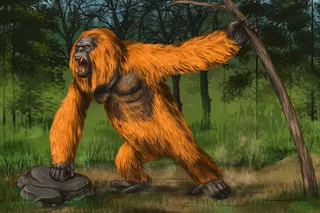Just as scientists can determine the age of a tree using its tree rings, scientists can also determine the age of a mastodon using its tusks.
And thanks to modern technology, scientists can now understand more about this prehistoric mammal. Researchers from the University of Cincinnati, the University of Michigan and the University of Nebraska-Lincoln used a geochemical process to determine the migration patterns of the Buesching mastodon, and published the findings in a recent study.
The Buesching mastodon was first discovered near Fort Wayne, Ind. in 1998. Experts believe a rival mastodon tusk punctured the right side of his skull and killed the mastodon. Researchers believe it had migrated to a summer mating territory — nearly 100 miles away from his home territory — and that a potential mate had been the cause of the fight. Now, with the use of Strontium Isotope Geochemistry, researchers may be able to ...















